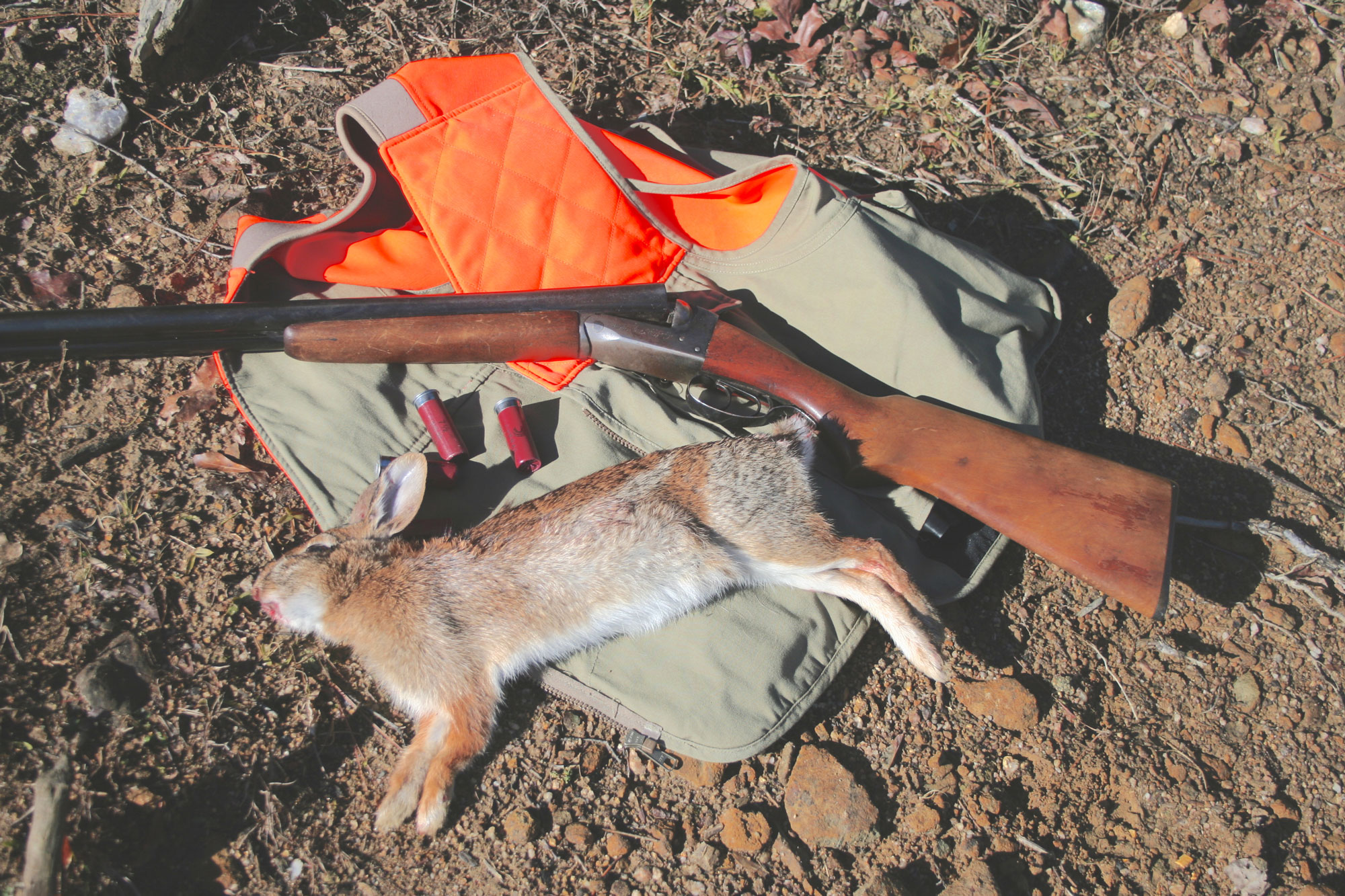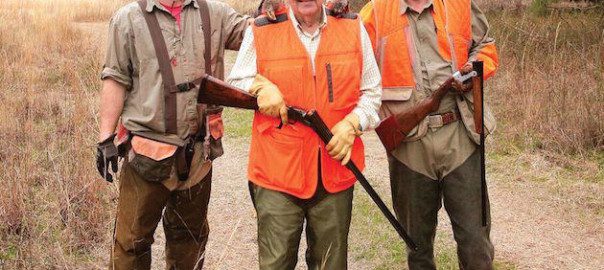Uncle Earl left the old 12 gauge shotgun to me, and I planned to honor him that day by rabbit hunting with it one more time.
The pack of beagles bailed out of the dog box on the back of the pickup truck and immediately struck a rabbit as they dived into the underbrush of the young pine plantation. My buddy Bill, who brought his veteran pack of beagles, and the other hunters waded through the thick understory of high grass, briars and honeysuckles after the hounds. But I stayed at the truck, taking a seat on the tailgate and enjoying the warmth of the November sun just peeking over the tops of the 8- to 10-year-old pines.
The hound music was a welcome chorus on opening day of small game season in South Carolina, and I tried to identify each of the dogs’ voices as they joined in the chase. The serenade carried well down the hill and almost out of hearing as the bunny zigzagged his way towards a creek that fed a lowland swamp. The hunters joined the refrain, urging the hounds on: “Hey, boy!” “Run ’em, girl!” “Attaboy, keep him going!” “Wooo-bee, Wooo-bee!”
Then, as cottontails always do, the rabbit turned and headed back in a big circle towards the spot he had been rousted from a half-hour earlier. I reached into the bed of the truck and picked up a worn, soft gun case and took out an old Stevens double-barrel 12 gauge. This was the shotgun my late uncle Earl Bridges had hunted rabbits with for five decades until his bad knees would no longer stand up to long days in the woods with his beloved beagles. Uncle Earl left the shotgun to me, and I planned to honor him that day by rabbit hunting with it one more time.
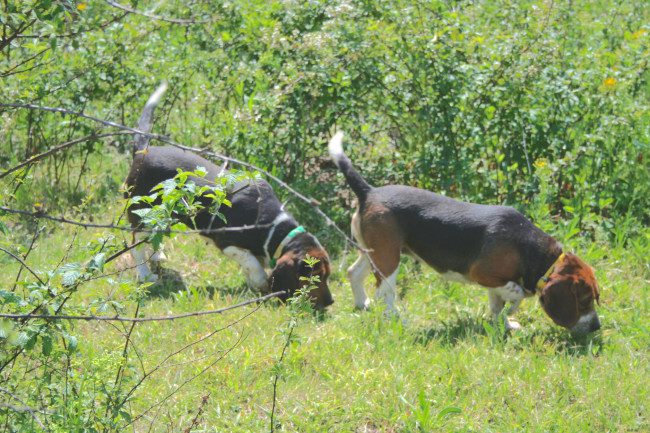
The beagles hard at work.
When he came home from World War II, Uncle Earl had two goals: Find a good job and a good wife. He found the good wife first, Aunt Martha, who presented him with the Stevens 12 gauge as a wedding present in the late 1940s. Then he found a job driving a truck for a soft drink bottling company and made a decent living doing that until those bad knees forced him to retire when it got too painful to climb up into the cab and down for deliveries.
Aunt Martha knew from the get-go that there were several things sacred to Uncle Earl: Saturdays were for fishing in spring and summer and for rabbit hunting in winter. The backyard would always have a pen to house three or four good rabbit dogs. There was a bonus, too—fried rabbit, rabbit stew, even barbecued rabbit were mainstays on the dining room table from Thanksgiving to Valentine’s Day.
When he took a break from rabbit hunting, the shotgun served to bring home a hunting bag full of squirrels from a river bottom oak stand or a brace of ducks from the river itself.
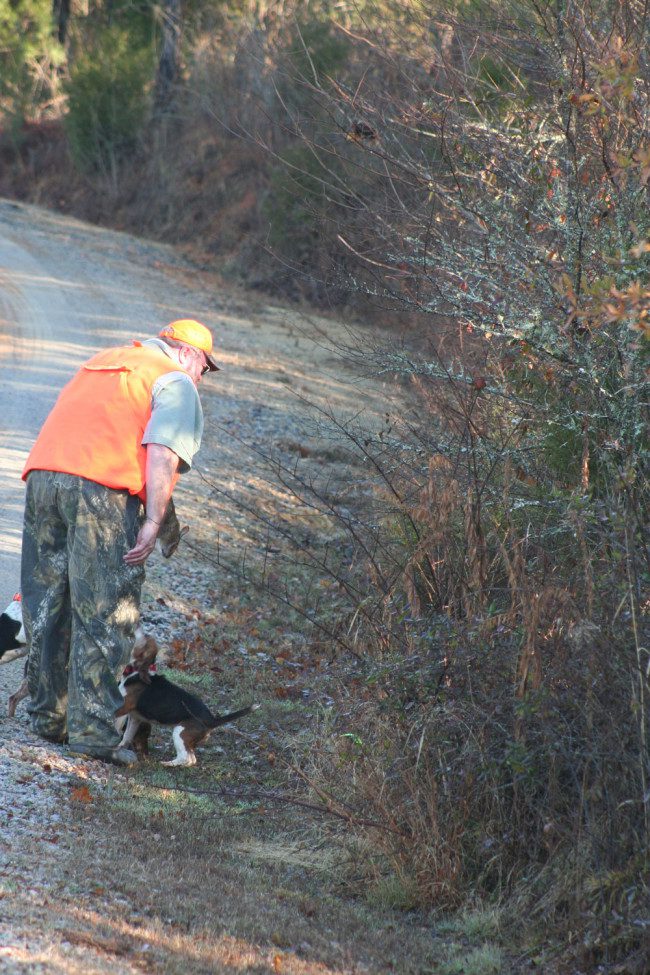
Letting the dogs see, but not touch, the rabbit they helped bring to the bag.
There was also the time he came home from squirrel hunting with a pair of Canada geese. Uncle Earl was hunting the hardwoods surrounding the Alligator Pond, a blackwater oxbow off the Savannah River upstream from Augusta, Georgia, when he heard geese honking. Looking for a place to land, the geese were circling an unmowed cornfield just outside the hardwood bottom where the Alligator Pond was located.
Earl’s squirrel hunting that morning had been thwarted by a heavy fog lying in the tops of the hardwoods. He could not see the geese because the fog hung almost down to the tops of the standing corn stalks, so he crept to the edge of the woods, searching the blanketed sky for wings, while opening the breech of the shotgun and removing the low brass 6s.
Earl carried a stash of high brass 4s in his jacket pocket just in case there were ducks on the Alligator Pond and he tried to insert two of them into the barrels. But, with his eyes riveted on the fog, he could not get the shells to chamber into the barrels. Try as he might, they just would not load, and, he later recalled, the geese were now honking below tree level though still not visible in the fog, and he was beginning to panic from frustration.
Finally, he peeked down from the heavy blanket of fog to see what was the matter. A greenbrier vine lying across the breech was obstructing the shells. He quickly pushed it aside and shoved two shells into the barrels just in time to see two Canadas drift under the fog, feet down, preparing to land. Earl swung on the geese, dropping one and then the other before it could climb back into the safety of the fog. That year, he said, was the only time he ever remembered eating goose for Christmas.

Even if only one rabbit had been bagged, the hunt would still have been a success.
The baying of the hounds grew louder. The cottontail was headed right towards the pickup truck. I quickly loaded a pair of low brass 6s and put my thumb on the safety slide. The dogs were in full chase by now , hot on the heels of the rabbit coming back through the young pine stand. I shouldered the old Stevens just as the bunny bolted from the cover to cross the dirt road.
With one shot, the first rabbit of the day was headed for the frying pan. I held it aloft and let the beagles clamor below in hopes of getting a bite, then slipped it into my hunting jacket. The rabbit hunt, though just begun for the day, was already a success. I dedicated the shot that ended the first chase to my late Uncle Earl and to his Stevens 12 gauge.
Our family is steeped in rabbit hunting tradition. My dad and Uncle Earl grew up during the Great Depression and rabbit hunted for food and survival. I grew up in the post-World War II years and rabbit hunted for fun and food. My two sons grew up in the ’80s and ’90s and rabbit hunted for fun and food. Now it’s time for my grandchildren to take up the mantel and enjoy one of the greatest sports known to man. And if they do, one of them will get to hunt with that old Stevens 12 gauge.
After all, I’ve proved it will still take a rabbit.
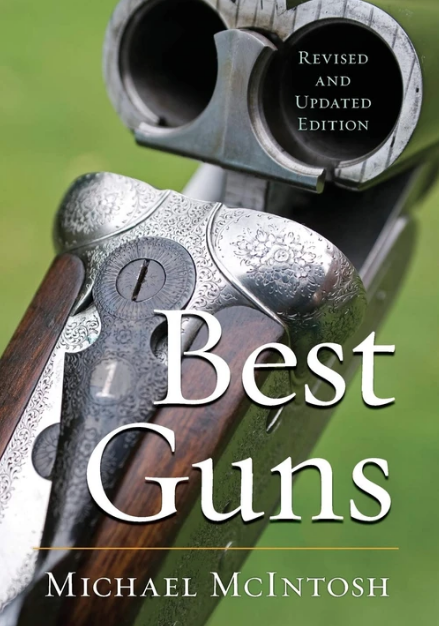 Michael McIntosh offers practical advice on buying, shooting and collecting older guns–what to look for and what to look out for, all based on long experience. McIntosh also offers advice on buying and shooting older guns–what to look for and what to look out for, all based on long experience.
Michael McIntosh offers practical advice on buying, shooting and collecting older guns–what to look for and what to look out for, all based on long experience. McIntosh also offers advice on buying and shooting older guns–what to look for and what to look out for, all based on long experience.
As interest in fine double guns reaches a new high in this country, Best Guns serves as both a guide for the uninitiated and a standard reference for the experienced collector and shooter, all written with the precision and seamless grace that were Michael McIntosh’s trademark style. Shop Now

